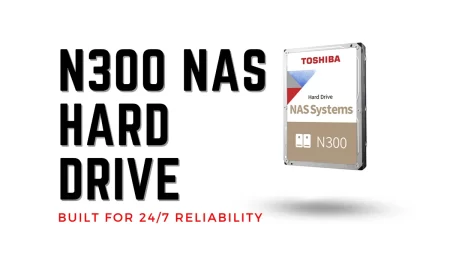Newsletter Writing: Tips for Creating Engaging Content
Newsletter Writing: As businesses continue to shift their marketing focus to the digital space, newsletter writing has become a critical aspect of communication with customers. With newsletters, businesses can inform, engage, and build relationships with their subscribers.
But with so many newsletters flooding people’s inboxes every day, how can you make yours stand out? In this article, we’ll share some tips for creating engaging newsletter content that will help you capture your subscribers’ attention and keep them coming back for more.
Newsletters are an effective way of communicating with your audience and keeping them engaged. It is a marketing strategy that has been around for decades, and it still holds immense importance in the digital era. In this article, we will discuss the scope of newsletter writing, its benefits, best practices, and mistakes to avoid.
In this article we will discuss:
- What is a Newsletter?
- Importance of Newsletters
- Benefits of Newsletter Writing a. Building a relationship with the audience b. Driving Traffic to the website c. Cost-effective Marketing Strategy
- Scope of Newsletter Writing a. Business Newsletters b. Personal Newsletters c. Non-profit Newsletters
- Newsletter Writing Process a. Planning b. Writing c. Designing d. Sending
- Best Practices for Newsletter Writing a. Keep it short and concise b. Add value to the readers c. Use Attention-grabbing Headlines d. Optimize for mobile devices
- Measuring the success of Newsletter Writing a. Open Rates b. Click-Through Rates c. Conversion Rates
- Common Mistakes to Avoid in Newsletter Writing a. Over-promotion b. Poor Quality Content c. Not Personalizing the Newsletter
- Conclusion
- FAQs
What is a Newsletter? A newsletter is a regular publication sent to subscribers via email or physical mail. It contains information about the latest news, updates, promotions, and other relevant content related to the subscriber’s interests.
Importance of Newsletters
Newsletters are an essential tool for businesses and individuals to keep their audience informed about their latest news and updates. It is an excellent way to create a personal relationship with the subscribers and build brand loyalty.content.
Benefits of Newsletter Writing
a. Building a relationship with the audience Newsletters allow you to communicate with your audience directly, which helps to build trust and establish a personal relationship. By providing relevant and valuable information, you can create a loyal subscriber base who are more likely to engage with your content.
b. Driving Traffic to the website Newsletters are an excellent way to drive traffic to your website. By adding links to your website or blog, you can direct your subscribers to your site and increase engagement.
c. Cost-effective Marketing Strategy Newsletters are a cost-effective marketing strategy. It requires minimal investment and can provide a high return on investment. Compared to other marketing channels, newsletters are an affordable and effective way to promote your business.
Scope of Newsletter Writing
a. Business Newsletters Business newsletters are used by companies to keep their customers, partners, and investors informed about their latest news and updates. It is an effective way to promote the company’s products and services and establish brand loyalty.
b. Personal Newsletters Personal newsletters are used by individuals to communicate with their family, friends, or colleagues. It is an excellent way to share personal stories, updates, and other relevant content.
c. Non-profit Newsletters Non-profit newsletters are used by non-profit organizations to communicate with their donors and supporters. It is an effective way to keep the supporters informed about the latest news, events, and other activities.
Newsletter Writing Process
Newsletters are a great way to keep your audience engaged and informed about your business. A well-crafted newsletter can help you establish a strong relationship with your readers and ultimately drive more business. However, creating an effective newsletter requires a strategic approach that involves planning, writing, designing, and sending. In this article, we will explore the newsletter writing process in detail and provide tips and best practices for each stage.
- Planning The first step in creating a successful newsletter is planning. Before you start writing, you need to determine your goals and target audience. What do you want your newsletter to achieve? Who is your target audience? What topics will be covered in the newsletter?
Once you have a clear understanding of your goals and audience, you can start creating a content calendar for your newsletter. This will help you stay organized and ensure that you are delivering valuable content to your readers on a regular basis. You should also consider the frequency of your newsletter. Will you be sending it monthly, bi-weekly, or weekly? Consistency is key, so make sure you choose a frequency that you can stick to.
- Writing The second step in the newsletter writing process is writing the content. When writing your newsletter, it’s important to keep it short and concise. People have limited attention spans, and you don’t want to overwhelm them with too much information. Stick to the topics that are most relevant and valuable to your audience.
In addition to being concise, your content should also add value to your readers. Provide tips, advice, or insights that they can’t get anywhere else. Make sure your content is informative, entertaining, and engaging. Use a conversational tone and keep your sentences simple and easy to read.
Another important element of your newsletter is the headlines. Use attention-grabbing headlines to draw your readers in and encourage them to keep reading. Your headlines should be clear, concise, and relevant to the content.
- Designing The design of your newsletter is just as important as the content. A visually appealing newsletter can help to increase engagement and make your content more memorable. When designing your newsletter, make sure it’s easy to read and navigate. Use a clear, readable font and a color scheme that’s consistent with your brand.
It’s also important to optimize your newsletter for mobile devices. More and more people are reading their emails on their phones, so make sure your newsletter is easy to read on a small screen. Use a responsive design that automatically adjusts to different screen sizes.
- Sending The final step in the newsletter writing process is sending. Once you’ve written and designed your newsletter, it’s time to send it to your subscribers. Before you hit send, make sure you test your newsletter to ensure that it looks good on different email clients and devices.
When sending your newsletter, make sure you personalize it for each subscriber. Use their name in the subject line and greeting to make it feel more personal. You should also segment your email list based on interests, behaviors, or demographics to ensure that your content is targeted and relevant.
Best Practices for Newsletter Writing (Scope of Newsletter Writing)
Newsletter writing can be a powerful tool for businesses to connect with their audience and drive engagement. However, with so much content competing for attention, it’s important to make sure your newsletter stands out. Here are some best practices to follow:
a. Keep it short and concise: People are busy and don’t have time to read lengthy newsletters. Keep your content brief and to the point. Focus on the most important information and use bullet points or numbered lists to break up text.
b. Add value to the readers: Your newsletter should provide something of value to your readers. This could be exclusive content, special offers, or helpful tips and advice. Make sure that your content is relevant and interesting to your target audience.
c. Use Attention-grabbing Headlines: The headline is the first thing your readers will see, so make it count. Use catchy headlines that grab attention and entice readers to keep reading. A good headline should be clear, concise, and give readers a reason to continue reading.
d. Optimize for mobile devices: More and more people are reading emails on their mobile devices, so it’s important to make sure your newsletter is mobile-friendly. Use a responsive design that adjusts to different screen sizes, and make sure your font is large enough to read on a small screen.
By following these best practices, you can create a newsletter that grabs your readers’ attention and keeps them engaged.
Measuring the success of Newsletter Writing (Scope of Newsletter Writing)
It’s important to track the performance of your newsletter to understand what’s working and what’s not. Here are three key metrics to consider:
a. Open Rates: This is the percentage of people who open your newsletter. A low open rate could indicate that your subject line isn’t compelling enough, or that your content isn’t engaging.
b. Click-Through Rates: This is the percentage of people who click on a link in your newsletter. A low click-through rate could mean that your content isn’t relevant to your audience, or that your call-to-action isn’t clear enough.
c. Conversion Rates: This is the percentage of people who take a desired action after clicking on a link in your newsletter. This could be anything from making a purchase to filling out a form. A low conversion rate could indicate that your landing page isn’t optimized, or that your offer isn’t compelling enough.
By tracking these metrics, you can identify areas for improvement and make adjustments to your newsletter strategy. It’s also important to set realistic goals for each metric and track your progress over time.
Common Mistakes to Avoid in Newsletter Writing (Scope of Newsletter Writing)
To ensure your newsletter is well-received by your audience, it’s important to avoid these common mistakes:
a. Over-promotion: Your newsletter shouldn’t be solely focused on promoting your products or services. Instead, it should provide value to your readers and build trust and rapport with them. If your newsletter is too promotional, your readers may become disengaged and unsubscribe.
b. Poor Quality Content: Your newsletter should provide valuable and relevant content that resonates with your audience. If your content is low-quality or irrelevant, your readers may lose interest and stop opening your newsletters.
c. Not Personalizing the Newsletter: Personalization is key to building a strong relationship with your audience. If your newsletter isn’t personalized to your readers’ interests and needs, they may feel like you’re not speaking directly to them. Personalization can include using your readers’ names, segmenting your list based on their interests, and tailoring your content to their specific needs.
By avoiding these mistakes and focusing on providing value to your readers, you can create a successful and engaging newsletter that keeps your audience coming back for more.
Conclusion (Scope of Newsletter Writing)
Newsletters are an effective way to build and maintain a relationship with your audience, whether you’re a business, nonprofit, or individual. By following best practices like keeping your newsletter short and concise, adding value to your readers, using attention-grabbing headlines, and optimizing for mobile devices, you can create a newsletter that resonates with your audience and encourages them to engage with your brand.
Measuring the success of your newsletter can help you fine-tune your approach and improve your results. By tracking metrics like open rates, click-through rates, and conversion rates, you can see what’s working and what’s not, and make adjustments accordingly.
To ensure your newsletter is well-received, it’s important to avoid common mistakes like over-promotion, poor quality content, and not personalizing the newsletter. By providing valuable and relevant content, tailoring your messaging to your audience’s interests, and building a personal connection with your readers, you can create a successful and engaging newsletter that keeps your audience coming back for more.
FAQs
- How often should I send a newsletter?
The frequency of your newsletter will depend on your audience’s preferences and your resources. Some audiences may prefer to receive a weekly or monthly newsletter, while others may only want to hear from you on occasion. It’s important to find a balance that works for both you and your audience.
- How can I improve my open rates?
To improve your open rates, you can try testing different subject lines, sending your newsletters at different times, and segmenting your list based on your audience’s interests. You can also try personalizing your newsletter to make it more relevant to your readers.
- What should I include in my newsletter?
Your newsletter should provide value to your readers and reflect your brand’s messaging. You can include updates on your products or services, relevant industry news, helpful tips or advice, and links to your blog or website. It’s important to tailor your content to your audience’s interests and needs.
- How can I measure the success of my newsletter?
You can measure the success of your newsletter by tracking metrics like open rates, click-through rates, and conversion rates. These metrics can help you see what’s working and what’s not, and make adjustments accordingly.
- How can I avoid over-promotion in my newsletter?
To avoid over-promotion, try to provide value to your readers by focusing on helpful tips or advice, relevant industry news, and other content that resonates with your audience. You can still promote your products or services, but make sure it’s not the main focus of your newsletter.
Image Source: Pexels




Leave a Comment